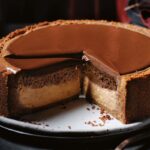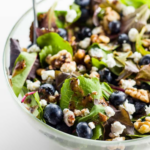Embark on a culinary journey exploring the vibrant world of Banting wraps! This guide unveils a treasure trove of fresh, unique fillings, transforming simple wraps into flavour explosions. We’ll delve into diverse flavor profiles, from savory delights to sweet temptations, offering detailed recipes, step-by-step instructions, and visually stunning presentation ideas. Prepare to elevate your Banting experience to new heights with these inventive and satisfying wrap creations.
Learn to craft the perfect Banting wrap, mastering the art of balancing textures and flavors. Discover the secrets to using high-quality ingredients that dramatically enhance the taste and nutritional value. We’ll explore various wrap bases, assembly techniques, and serving suggestions, ensuring your Banting wraps are not only delicious but also visually captivating. Whether you’re a seasoned Banting enthusiast or a curious newcomer, this comprehensive guide provides everything you need to embark on a delicious and healthy culinary adventure.
Step-by-Step Banting Wrap Recipe Creation
Crafting delicious and satisfying Banting wraps involves careful selection of ingredients and a mindful approach to preparation. The key is to balance flavor and texture while adhering to the low-carbohydrate principles of the Banting diet. This section provides a detailed recipe and variations to inspire your culinary creativity.
Banting Chicken and Avocado Wrap Recipe
This recipe provides a flavorful and satisfying Banting wrap, packed with protein and healthy fats. The vibrant colors and textures make it visually appealing as well.
- Ingredients: 2 large lettuce leaves (e.g., romaine or butter lettuce), 100g cooked chicken breast, shredded, ½ ripe avocado, mashed, 1 tablespoon mayonnaise (full-fat), 1 tablespoon chopped fresh cilantro, salt and pepper to taste.
- Preparation: Gently wash and dry the lettuce leaves. Lay them flat on a plate. In a small bowl, combine the shredded chicken, mashed avocado, mayonnaise, and cilantro. Season with salt and pepper to your liking. The mixture should be creamy and flavorful.
- Assembly: Spoon the chicken and avocado mixture evenly onto the center of each lettuce leaf. Carefully fold the sides of the lettuce leaf inwards, then roll it up tightly, like a burrito.
- Serving: Serve immediately for optimal freshness and crispness. The wrap can be enjoyed as a light lunch or a satisfying snack.
Banting Wrap Variations
Exploring different ingredient combinations allows for a wide variety of flavors and textures within the Banting framework. These variations demonstrate the versatility of the basic wrap concept.
- Banting Salmon and Cream Cheese Wrap: Replace the chicken with 100g cooked salmon, flaked, and substitute the mayonnaise with 2 tablespoons of full-fat cream cheese. Add a squeeze of lemon juice for extra brightness. The salmon provides a rich, oily protein source, complementing the cream cheese’s smooth texture.
- Banting Tuna and Cucumber Wrap: Use 100g canned tuna in olive oil (drained), mixed with 1 finely chopped cucumber and 1 tablespoon of olive oil instead of the chicken and avocado. This variation offers a lighter, refreshing option, ideal for warmer weather. The cucumber adds a delightful crunch.
- Banting Steak and Pepper Wrap: Use thinly sliced grilled steak (approx. 100g) in place of the chicken, and add a generous helping of sautéed bell peppers (red and yellow) for sweetness and color. A drizzle of olive oil and a sprinkle of sea salt enhance the flavors. The steak provides a hearty protein base, and the peppers offer a vibrant, colorful contrast.
Importance of Fresh, High-Quality Ingredients
Using fresh, high-quality ingredients is paramount in creating a truly exceptional Banting wrap. The freshness of the produce directly impacts the taste, texture, and overall nutritional value. For instance, using wilted lettuce will result in a less appealing wrap compared to one made with crisp, vibrant leaves. Similarly, high-quality chicken breast will offer a superior flavor and texture compared to processed or lower-grade alternatives. The vibrant colors of fresh ingredients also contribute to a more visually appealing and enticing wrap. Investing in high-quality ingredients ensures a superior culinary experience.
Visual Guide to Banting Wrap Assembly
Achieving the perfect Banting wrap involves a balance of attractive presentation and structural integrity. A well-assembled wrap should be visually appealing, showcasing the vibrant colors and textures of the fillings, while remaining firm enough to hold its shape and prevent spillage. The ideal texture is a pleasing combination of crispness from the base and the satisfying chewiness of the fillings.
The visual appeal of a Banting wrap is enhanced by a neat and even distribution of the filling. Avoid overcrowding the wrap, which can lead to breakage and messy eating. Aim for a balanced distribution of colors and textures throughout the wrap, creating a visually stimulating and appetizing presentation. The tightness of the wrap should be sufficient to secure the filling without being overly compressed, which could compromise the texture and enjoyment of the meal.
Banting Wrap Folding Techniques
Three distinct folding techniques ensure diverse presentation and ease of handling for your Banting wraps. Each method offers a unique visual appeal and functionality.
- The Classic Roll: Begin by laying your Banting wrap base flat. Evenly distribute your chosen fillings along the center, leaving about a one-inch border at the top and bottom. Fold the bottom edge over the filling, then tightly roll the wrap away from you, tucking in the sides as you go. The finished product resembles a neat cylinder, showcasing a balanced cross-section of the filling when sliced. This method is best suited for firm bases like low-carb tortillas.
- The Envelope Fold: Place your filling in the center of the Banting wrap base. Fold the two opposite sides inwards, meeting in the middle over the filling. Then, fold the bottom edge up and over the filling, creating a neat, sealed package. This method is particularly suitable for larger leaves like collard greens, offering a visually appealing, structured presentation.
- The Lettuce Wrap: If using larger lettuce leaves as a base, place the filling in the center. Fold the sides inwards, creating a cup-like shape. This technique is simple, quick, and visually striking, highlighting the vibrant colors of both the lettuce and the filling. It’s ideal for showcasing colorful and chunky fillings.
Banting Wrap Base Comparison
The choice of Banting wrap base significantly impacts the overall texture, flavor, and ease of assembly. Consider the following options to find the best fit for your recipe and preference.
| Base Type | Texture | Flavor | Ease of Use |
|---|---|---|---|
| Lettuce (e.g., Romaine, Butter Lettuce) | Crisp, slightly brittle | Mild, slightly bitter (depending on the type) | Moderately easy; requires careful handling to avoid tearing |
| Low-Carb Tortillas | Soft, pliable, slightly chewy | Mild, slightly floury (depending on the brand and ingredients) | Easy; rolls easily and holds its shape well |
| Collard Greens | Firm, slightly tough, yet pliable when cooked | Mild, slightly earthy | Moderately easy; may require blanching for better pliability |
Banting Wrap Presentation and Serving Suggestions

Elevating your Banting wraps from a simple meal to a culinary masterpiece involves thoughtful presentation and consideration of serving temperatures. The visual appeal of your creation significantly impacts the overall dining experience, enhancing both taste and enjoyment. Careful attention to plating, garnishes, and accompanying sides can transform a straightforward wrap into a truly memorable dish.
The optimal serving temperature for Banting wraps depends heavily on the fillings. Cold wraps, such as those with fresh salads and chilled proteins, should be served immediately after assembly to maintain crispness and freshness. Warm wraps, filled with sautéed vegetables or grilled meats, benefit from being served warm, enhancing the flavors and textures of the ingredients.
Visually Appealing Banting Wrap Presentations
Three distinct presentations showcase the versatility of Banting wraps. The first features a vibrant Mediterranean-inspired wrap. Imagine a sun-drenched scene: a whole-wheat wrap (or your preferred Banting-friendly alternative) cradling a colorful medley of finely chopped cucumber, ripe tomatoes, Kalamata olives, and crumbled feta cheese. A drizzle of high-quality olive oil adds a glistening sheen, while a sprinkle of fresh oregano provides a pop of green and a fragrant aroma. This is served alongside a small side salad of mixed greens dressed with a lemon vinaigrette.
The second presentation offers a more substantial and savory option. Picture a perfectly grilled chicken breast, sliced thinly, nestled within a warm wrap. The chicken’s golden-brown hue contrasts beautifully with the deep green of shredded spinach and the creamy texture of avocado slices. A sprinkle of toasted slivered almonds adds a satisfying crunch and visual interest. This is accompanied by a side of roasted sweet potatoes, their caramelized edges adding warmth and depth to the plate.
Finally, a lighter, fresher presentation focuses on seafood. A delicate Banting wrap encloses succulent pieces of grilled salmon, its pinkish-orange color complemented by the bright green of chopped dill and the pale yellow of thinly sliced bell peppers. A squeeze of fresh lemon juice adds both brightness and acidity. A side of asparagus spears, lightly steamed and seasoned, provides a visually appealing contrast and a touch of elegance.
Appropriate Serving Temperatures for Banting Wraps
Serving temperatures directly influence the sensory experience of eating a Banting wrap. Cold wraps, featuring ingredients like raw vegetables, cold cuts, and fresh herbs, should be served chilled to preserve their crispness and freshness. The coolness of the fillings contrasts pleasingly with the slightly warmer wrap itself. Conversely, warm wraps, incorporating elements like grilled meats, roasted vegetables, or warm cheeses, are best served immediately after preparation while still warm. This enhances the flavors and aromas, creating a more satisfying and enjoyable eating experience.
Creating a Visually Appealing Image of a Banting Wrap
Consider a close-up shot of a Banting wrap filled with juicy grilled shrimp, vibrant red bell peppers, and creamy avocado. The warm, golden-brown tones of the wrap provide a rich backdrop to the contrasting colors of the fillings. The shrimp’s glossy sheen catches the light, creating a sense of freshness and succulence. The texture of the avocado is evident, appearing smooth and creamy, while the bell peppers exhibit a slight sheen and crispness. Soft, natural light enhances the colors and textures, creating a vibrant and appetizing image. The overall composition focuses on the interplay of colors, textures, and light to evoke a sense of freshness and deliciousness.
From the savory satisfaction of a chicken and avocado wrap to the exotic allure of a prawn and mango creation, the possibilities with Banting wraps are endless. This guide has equipped you with the knowledge and inspiration to create a diverse range of flavorful and visually stunning wraps. Remember, the key lies in using fresh, high-quality ingredients and mastering the art of balanced flavors and textures. So, gather your ingredients, unleash your creativity, and embark on a delicious Banting journey filled with vibrant flavors and satisfying textures. Bon appétit!
Popular Questions
Are Banting wraps suitable for vegetarians/vegans?
Many Banting wrap fillings can be adapted for vegetarian or vegan diets. Focus on using vegetable-based proteins, healthy fats, and low-carb vegetables for fillings.
Can I store leftover Banting wraps?
Yes, leftover Banting wraps can be stored in an airtight container in the refrigerator for up to 2-3 days. The shelf life may vary depending on the filling ingredients.
How can I make my Banting wraps gluten-free?
Ensure you use gluten-free wrap bases like lettuce leaves or gluten-free tortillas. Double-check all other ingredients to ensure they are also gluten-free.
What are some creative garnish ideas for Banting wraps?
Consider fresh herbs (cilantro, parsley), microgreens, avocado slices, toasted nuts, seeds, or a drizzle of healthy oil or sauce for visual appeal and added flavor.


